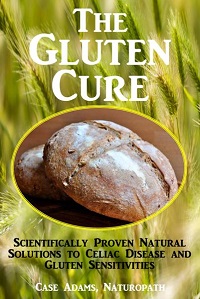Spruce Tree Bark Prebiotic Compound
Research has confirmed that a compound from the bark of the Spruce tree and similar tree barks is a powerful and functional prebiotic that feeds our healthy gut bacteria.
In this article
Spruce tree prebiotic
The researchers are from Finland’s University of Turku. They determined that the compound, galactoglucomannan, is the primary component of the hemicellulose present in many softwood tree species. The researchers extracted galactoglucomannan from the Spruce tree (Picea abies), and then fed it to probiotic bacteria in the laboratory.
The newfound prebiotic was fed to three human probiotic species – Bifidobacterium animalis subsp. lactis Bb12 (B. lactis Bb12), Bifidobacterium longum and Lactobacillus rhamnosus GG. The testing confirmed that all three species of bacteria consumed and thrived from the wood-sourced prebiotic.
Prebiotics digestibility
By definition, prebiotics are non-digestible by the host. This means that we do not digest these prebiotics – which include fructooligosaccharides (FOS), galactooligosaccharides (GOS), inulin and other oligosaccharides like galactoglucomannan.
Healthy food sources of these prebiotics include onions, apples, oats, chicory root, onions, asparagus, dairy products, fibrous vegetables and many others.
The researchers also determined that galactoglucomannan’s ability to promote the growth of intestinal probiotics was comparable to levels found among fructooligosaccharides.
Our ancestors consumed tree barks
This point also supports the notion, as new research has revealed, that the barks of many tree species have been consumed by our ancestors as a food source. Research from the University of Utah on the teeth enamel of early humanoid fossils has shown that our early ancestors consumed tree barks.
This only adds to the understanding that humans have traditionally consumed not just the fruits of many trees, but also their roots, bark and leaves for medicinal purposes as well as nutritional purposes.
This also supports the fact that spruce bark has been used traditionally to aid in digestive issues. Because the bark feeds and stimulates the growth of our intestinal bacteria as well as supplies polyphenols and other anti-inflammatory phytonutrients, spruce bark is now a confirmed medicinal food.
North Americans and other cultures consumed tree bark
More recently, Native Americans and other traditional cultures have chewed the inner bark of the spruce to treat urinary tract infections, influenza, colds, rheumatism and even tuberculosis. The bark has also been placed on wounds to promote healing and preventing infection.
Many other tree barks have also been consumed for medicinal and nutritional benefits by cultures around the world.
Spruce tree shoots are also rich in vitamin C. Captain Cook and his crew reportedly used spruce beer (alcoholic and non-alcoholic) to help prevent scurvy. The food industry now uses spruce oil for chewing gum and as a flavoring agent.
Other research shows bark prebiotic aids digestion
Spruce bark’s ability to stimulate digestive health was confirmed in a recent study of a galactoglucomannan complex called GGMO-AX. The feeding was found to suppress the virulence of Salmonella typhimurium within the birds.
The researchers discussed the newfound availability of these important prebiotics. “Hemicellulose is an untapped natural resource, which can be produced economically in large quantities, therefore, the study of probiotics and hemicellulose together could also have potential for symbiotic formulations,” they commented.
REFERENCES:
Polari L, Ojansivu P, Mäkelä S, Eckerman C, Holmbom B, Salminen S. Galactoglucomannan Extracted from Spruce (Picea abies) as a Carbohydrate Source for Probiotic Bacteria. J Agric Food Chem. 2012 Nov 7;60(44):11037-43. doi:10.1021/jf303741h.
Faber TA, Dilger RN, Iakiviak M, Hopkins AC, Price NP, Fahey GC Jr. Ingestion of a novel galactoglucomannan oligosaccharide-arabinoxylan (GGMO-AX) complex affected growth performance and fermentative and immunological characteristics of broiler chicks challenged with Salmonella typhimurium. Poult Sci. 2012 Sep;91(9):2241-54.
Cerling TE, Manthi FK, Mbua EN, Leakey LN, Leakey MG, Leakey RE, Brown FH, Grine FE, Hart JA, Kaleme P, Roche H, Uno KT, Wood BA. Stable isotope-based diet reconstructions of Turkana Basin hominins. Proc Natl Acad Sci U S A. 2013 Jun 25;110(26):10501-6. doi: 10.1073/pnas.1222568110.






























